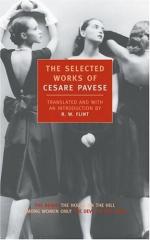|
This section contains 6,583 words (approx. 22 pages at 300 words per page) |

|
SOURCE: "Pavese's Intellectual Rhythm," in Italian Quarterly, Vol. 15, No. 60, Spring-Summer, 1972, pp. 5-26.
Below, Canadian educator and author Hutcheon studies characterization in Pavese's fiction, contending that it is consistent with his artistic aims.
When Pavese begins a story, a fable, a book, it never happens that he has in mind a socially determined milieu, a character or characters, a thesis. What he does have in mind is almost always only an indistinct rhythm, a play of events which, more than anything else, are sensations and atmospheres. His task is to grasp and construct these events according to an intellectual rhythm which transforms them into symbols of a given reality. His success in this, of course, will vary according to the degree of sensory, dialogical and human concreteness that he brings to his elaboration. From this comes the fact—a fact never noted enough—that Pavese does not care about...
|
This section contains 6,583 words (approx. 22 pages at 300 words per page) |

|


